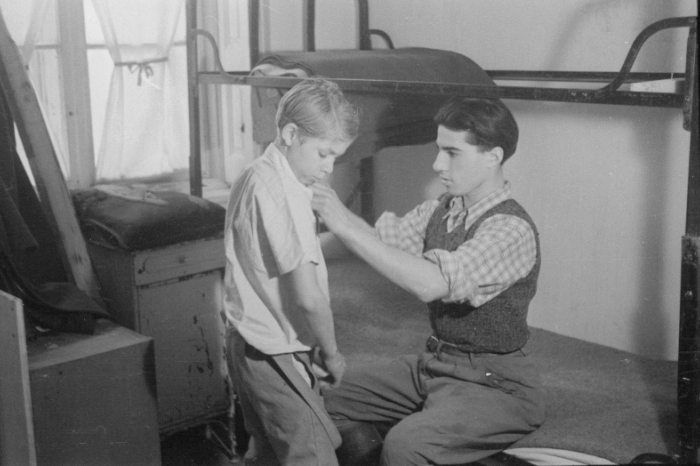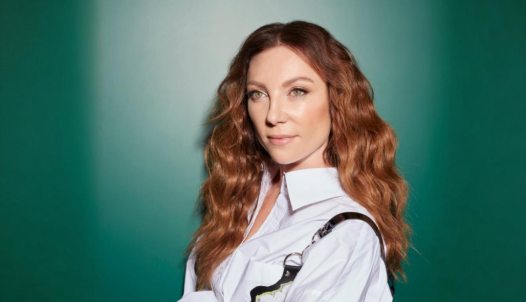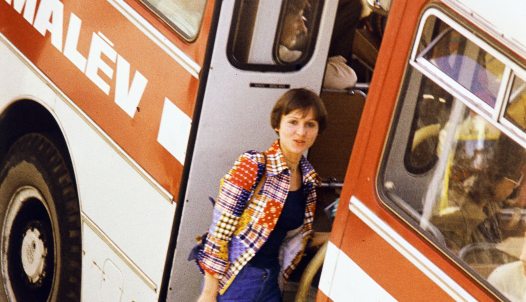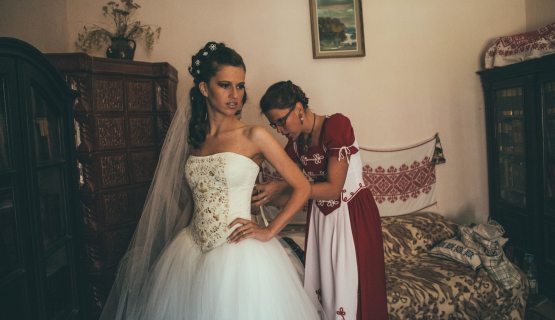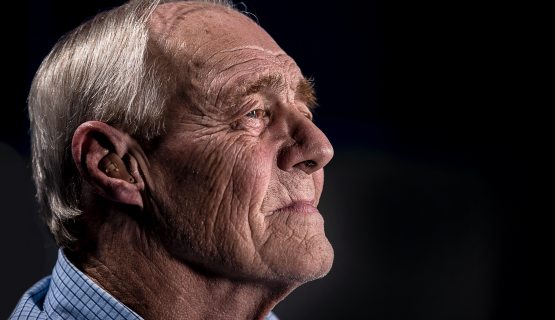The person who founded a self-governing children’s society – the story of Gábor Sztehlo
Even today, Géza Radványi’s moving classic of post Second World War Hungarian filmmaking, Valahol Európában (Somewhere in Europe, 1947), is a popular movie. It’s a tragically realistic tale of persecuted, orphaned, desperate children in the misery of war time. However, few are aware that the story was not born out of imagination but was based on actual events and real-life people. The screenplay was inspired by the largest child rescue campaign in Hungary at the end of the war and in following years, which is associated with Lutheran pastor Gábor Sztehlo.
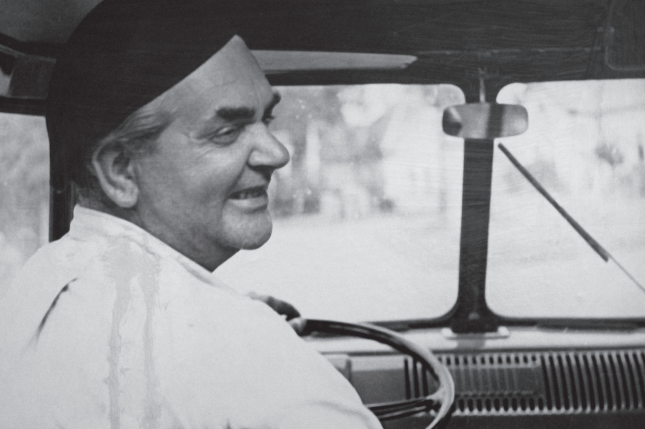
Pastor and saver of lives
Gábor Sztehlo was born Gábor Szenczy in Budapest in 1909. The family changed their name to Sztehlo in 1938. His father was an attorney of the Lutheran faith, his mother was raised in the Reformed tradition, the boys in the Evangelical tradition. Gábor attended the Lutheran grammar school in Sopron and then he was a student of Evangelical theology in the same city. In 1932, he was made a pastor following a field study tour to Finland, which fulfilled his social sensitivity and charitable commitment. He was assistant pastor of the Újhatvan congregation and in the mid-1930s he was sent to Nagytarcsa. Here he organized a lyceum, named after Sámuel Tessedik, on the Finnish model. The Second World War was already in full swing when he moved to Pest, where a new, dangerous task awaited him after the German occupation. In the framework of the Protestant humanitarian organization Good Pastor Committee, in partnership with its Catholic co-institution,
on the orders of Bishop Sándor Raffay, he was tasked with protecting and hiding persecuted Jewish children.
In October 1944, he was given the opportunity to provide refuge for endangered Jewish children in the villa of a wealthy acquaintance on Bérc Street. In the tense months that followed and without thought to his own safety, he persuaded many acquaintances to take in to their homes, basements, attics the persecuted young children he had gathered together. He had helpers but was desperately short of finance; he managed to obtain some support from the Swiss Red Cross as well as Protected House certificates that represented a measure of protection. Deaconesses, clerics and lay people also helped. Thanks to them and others, 1600 children, among them the later Nobel Prize-winning chemist György Oláh, plus several hundred adults, found safe refuge and were provided for in 32 locations on Csaba Street and Magdolna Street, in Fasor Grammar School and private houses in a total of thirty-two locations, until the end of the siege of Budapest.
Rise and fall of Gaudiopolis
Once the battles and persecution had ceased, part of this army of children stayed together. Many were Jewish children who had lost their parents and as time passed, they were joined by non-Jewish children, war orphans, vagrants and the needy.
In the post-war years, Sztehlo – as a member and office holder in the Freemasons – sought support for them. He was given a large plot of land by the Manfréd Weiss family in Zugliget, on which there stood several buildings and a villa. He founded an orphanage and foster home from donations of private individuals as well as backing from the International Red Cross.
The Pax children’s care home, which functioned without official state and church funding and grew to have 800 residents, was an unorthodox orphanage, the realization of the dreams and vision of Sztehlo: it created a self-governing children’s society called Gaudiopolis, that is, ‘city of joy’.
On their site, the children themselves raised a chapel, built a sports ground, organized a library, formed a choir and studied trades. Gaudiopolis was like a regular state with a constitution, government and newspaper; the children administered their own small autonomous society. Sztehlo and his colleagues only assisted but did not control them in the traditional sense.
In the community, the children themselves decided what they would study, how much they would work with the others. Ideal liberty and solidarity of love prevailed.
Some of the children who moved on from here made it to university, for instance, the poet Ottó Orbán, the journalist György Szilágyi and the director Ádám Horváth. Residents later created myths about the place, their time spent here and Uncle Gábor, the idealized person they lifted to near saintly status. Between 1945-1950, albeit amidst modest circumstances, life in Gaudiopolis continued without interruption, but in the end nationalization also reached them: the children’s society was shut down in the name of socialist education. The authorities suggested to Sztehlo that he remain, but under such humiliating terms and conditions designed to destroy the world he had built that he could not accept. He returned to his pastoral work, serving congregations in Buda Castle, Kelenföld and Kőbánya, but in the meantime he did what he could to help the needy, the sick, the elderly, and tried to take care of persons persecuted and displaced by the communist government.
The next great dilemma of his life came in 1956. His wife wanted them to flee the country because of the hopeless situation but he simply could not bring himself to leave. Thus his wife and two children escaped to Switzerland but he remained and continued the work that his faith and patriotism encouraged him to do.
‘Uncle Gábor’ as remembered by posterity
In 1961, he was given a visitor’s passport to travel to Switzerland to see his family. On his arrival he suffered a heart attack and doctors recommended that he should not go back. In the meantime his travel authorization expired, meaning that he was classified as a dissident subject to imprisonment. This made it impossible for him to return to Hungary. Thus, with a heavy heart, he decided to stay, they settled in the small Alpine town of Interlaken, as a fluent German speaker he undertook a post as pastor, he became involved in the social work of the local Freemason’s society but he was always impatient for the time when he could return to his homeland. In order to avoid legal retaliation in Hungary he had to gain Swiss citizenship, but foreigners had to wait ten long years before they were eligible. However, God had other plans. Shortly before the deadline was up, in May 1974, Gábor Sztehlo died peacefully, seated on a bench, in Interlaken, in his sixty-fifth year.
His ashes only returned to his homeland and Farkasrét cemetery decades later, and his memory was only revived around the time of the change of regime.
Although he received the Righteous Among the Nations award for his self-sacrificing rescue of Jewish children as early as 1972, his determination during the war and work carried out in the interest of Gaudiopolis only came to the fore in his homeland in 1989, when Erika Szántó made a documentary about him. In recent decades, his church and homeland have done better: his name is remembered in a school and a public space, and commemorated on several memorial plaques. His diary and papers have been published in a book entitled Isten kezében (In God’s Hands), the foundation named after him has become an important part of the educational and charitable work of the Lutheran church, a memorial to him stands in downtown Deák Square, on the side of the Lutheran Church. In spring 2019, Lutheran pastor Gábor Sztehlo was posthumously awarded the Hungarian Heritage Prize for his work.

